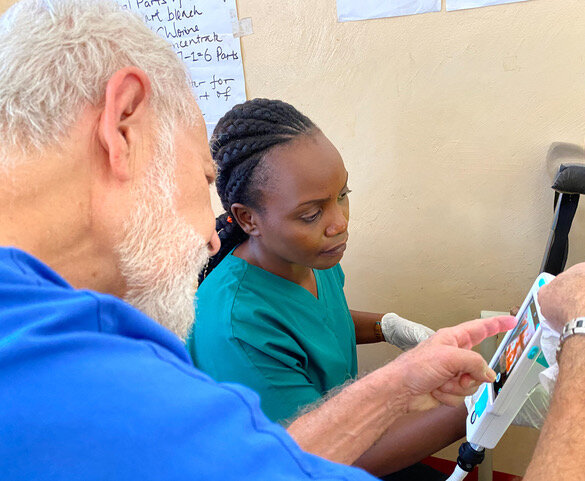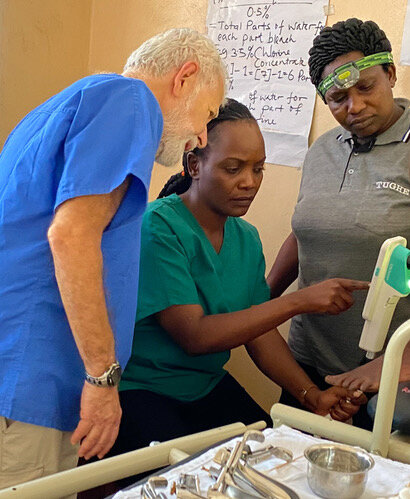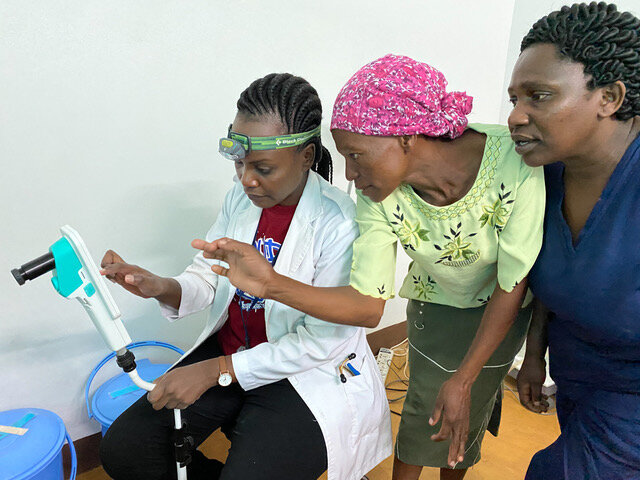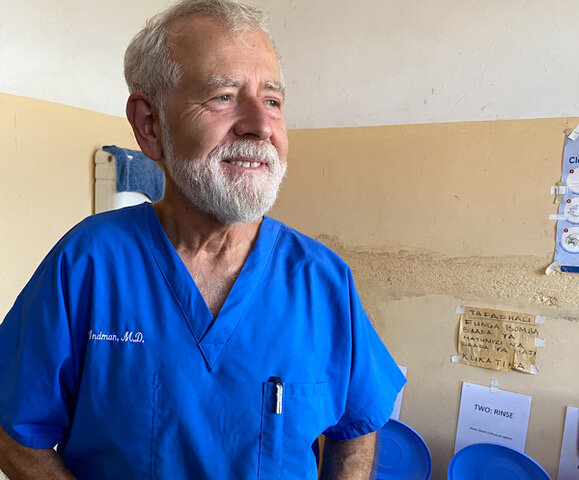By Volunteer OBGYN Specialist, Dr. Paul Indman
Cervical cancer is the most common form of cancer in Tanzania, killing nearly 7,000 women each year. Traditional screening methods, such as PAP and HPV testing, require reliable follow up and multiple visits if treatment is needed. This is impractical for much of the population of Tanzania, due to the vast distances women need to travel to reach medical facilities.
A large part of my GYN practice in the San Francisco Bay Area was devoted to the evaluation and treatment of dysplasia (pre-cancer) of the cervix by examination with a special microscope called a colposcope. For many years I taught colposcopy to the residents at Stanford University as well as gynecologists and mid-level practitioners. Developing countries often lack the luxury of using specialized equipment such as a colposcope. Instead they rely on a simplified method of inspecting the cervix called VIA (Visual Inspection with Acetic acid). This can identify some cases of dysplasia and allow immediate treatment in the same visit, and has been shown to decrease deaths from cervical cancer by about 30%. However, without magnification many smaller abnormalities are missed and some normal areas are over diagnosed as precancerous, leading to unnecessary treatment.
Advances in technology led to the development of a small colposcope, the EVA MobileODT, which uses a smartphone to take magnified photographs of the cervix. I brought the colposcope to FAME with slides and a comprehensive video on cervix examinations to demonstrate exactly what we were looking for. All of the Tanzanian staff including Dr. Anne, Dr. Caren and Nurse Midwives Siana and Joyce, spent a lot of time watching the video and going over the slides when we weren’t screening patients. Well in advance, they arranged outreach programs in the neighboring communities, in order to screen women who were at high risk of cancer but had never been screened. By the end of the November we had screened 93 women at FAME, 83 at the Gorofani and Barazani clinics near Lake Eyasi, and four women in the Endulen Hospital in Ngorongoro. All in all, we found 42 precancerous lesions that were treated on the spot, making it highly unlikely they will progress to cancer. We found two cases of cervical cancer, which were treatable in their early stage.
Sometimes a biopsy is needed to determine whether a lesion is cancerous, but in Tanzania many women struggle to even afford the small cost of having their biopsy read. While dysplasia can be treated on the spot, that treatment is not suitable for invasive cancer, which is treated entirely differently. Also, the ability to get biopsy feedback on the exam is essential to the learning process. Before leaving FAME, I worked with FAME leadership to form and personally support a special fund so that biopsies can be done without regard for one’s ability to pay.
Due to the lack of widespread knowledge about cervical cancer, it’s not easy to go into the communities and encourage women to come in for screening. While HPV vaccination programs will greatly reduce the risk of developing cancer, it will take years before the effects are seen across the country. While it is satisfying to know that we likely prevented 42 women from dying of cervical cancer, I am even happier that the staff at FAME learned to use the colposcope to improve the accuracy of their screening. After all the successful screenings we did together, there was no way I could take the colposcope home with me. At the request of every one of the practitioners, the EVA mobileODT has a new home at FAME. I’m eagerly looking forward to spending another month at FAME in 2020.




